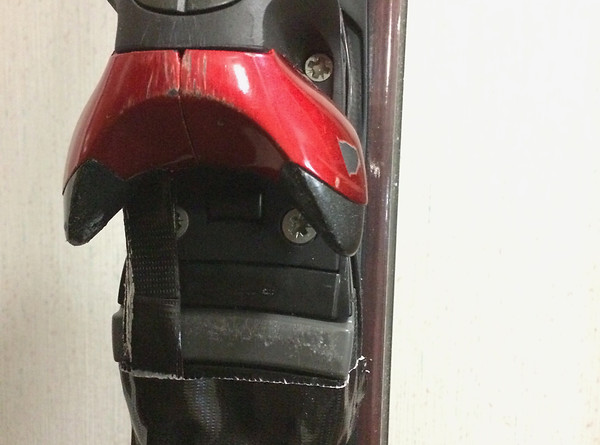Canting




To Cant or not to Cant, that is the question...
Canting is the process of measuring the knee mass and making adjustments to center that mass over the center of the foot. There are numerous ways to measure this and there are numerous ways to make the corrections. Canting is an often overlooked activity which can greatly benefit many skiers. The purpose of Canting is multifold as well. The simplest and most common is from coach observation of what is often referred to as knock knees, the knees are closer together than the feet are. Canting can correct this which makes for a more balanced response from both skis. Another reason to Cant is injury prevention, Knees that "roll in" or move over or inside the big toe causes strain on the ACL. This strain can lead to injury, centering the knee over the foot helps prevent ACL injury. A research paper is attached below on sports and ACL injury and prevention.
Measuring Cant
This Cant device is at Racers Edge in Breckenridge, CO. The vertical piece has 2 rods in a V shape at the top, automatically finding knee center, the pointer at the toe shows how many millimeters off boot center the knee is positioned. Each 5mm needs 1/2 degree of cant. Adding shims under the boot allows the boot fitter to dial in with precision what will be needed, before modifying the boot.
This Technica right boot has been modified using Cantology shims between the boot shell and outsole. The rear lug has been cut down to meet the required hight for safe binding release. This change positively affected the skiers right turn initiation and the knees became the same distance apart as the feet. The lack of initiation looked like the skier at the top of the page, the right leg basicaly straight up and down blocking the left leg from angulating further.

Basic Canting
Paying hundreds for the boot work and flying to Colorado to get it done is not feasible for an entire team of racers. However, adding a few strips of Gorilla tape to the binding Cants the ski, assuming its put in the correct spot on the correct foot. One question now is how much is enough? With Gorilla tape, 2 layers is 1/2 degree, 4 layers is 1 degree. With pronation, the tape goes on the inside edge of the ski. We are correcting the skier with the tape, not filling the gap. The immediate question is; will this impact my release settings, and the answer is yes, but it takes 12 layers (3 degrees) to impact the release indicator by 1. So a release DIN value of 5 would now be 6, still within the safe release range the bindings are tested at.
Right Ski Tape Cant

Simple Measurement
A few of these devises are around, most came from ski boot manufacturers in the 1970's or earlier. It's a balancing platform with a vertical upright. A slot in the middle shows center. Using calipers, finding knee center, then finding slot center, allow the coach to measure how many millimeters off center the knee is. Pronation is typical and tape is added to the inside edge of the binding under the big toe. More information is in the PDF below.